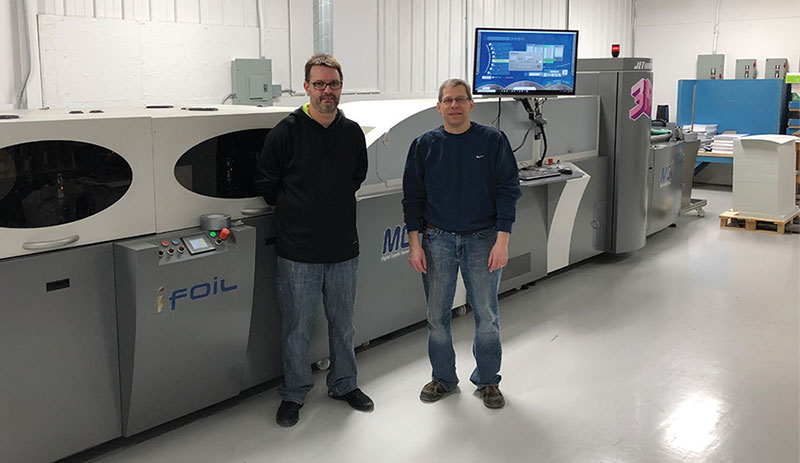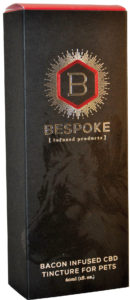
by Melissa Larson, contributing writer
PostPress
Keeping up with the changes in finishing is challenging, and finishers are approaching it with a variety of strategies. Due to the rapid advances in digital print, equipment requirements are accelerating. While finishers in the past have been able to simply update existing equipment to keep on pace, they now are confronted with new and innovative finishing equipment that manufacturers have been developing to help them, for example, incorporate UV, foil stamping and diecutting.
These extensive capital investments must be carefully considered. As one finisher commented, “It is much more prudent to stay ahead of the curve than fall behind and have to catch up later.”
While many finishers are taking a cautious approach to capital spending, others are getting aggressive: putting off retirement, doubling up on machines and even purchasing complementary businesses as they become available. We caught up with a few of these small-business trendsetters to ask them about their business outlook and plans for the future.

New to finishing
Bob McNamara is president of Foam Fabricators Inc., Aurora, Colorado. FFI has added print finishing services within the last five years, adding to its core competence of custom foam solutions for protective packaging, medical applications and construction purposes. The company’s new services include foil stamping, embossing, diecutting, folding, gluing, kleen stick application, fugitive glue and laser diecutting.
McNamara describes his biggest surprise in working with printers and others in the graphics arts industry. “Since we are the end of the food chain, printers want their project done yesterday. That makes it difficult to set up a production schedule with all the ongoing changes,” said McNamara, whose company does not do digital work in-house.
“We have seen a large increase in carton foil stamping, mostly from the marijuana business.”
When asked where he sees the business going in one to two years, McNamara emphasized that his company is the new kid on the block.
“We are evaluating at this time what our future needs will be concerning equipment. We are trying to get more utilization out of our present equipment before we start adding. At the present time, our goal is to improve our relationships with the printers so that they have confidence in our abilities.”
Changes in business models
We asked finishers about the changes they have seen in terms of jobs coming into their shops, especially the ratio of digitally printed vs. offset.
“The majority of change that we have realized at Feiereisen, Inc. (Cedar Rapids, Iowa) would be on the digital side of our business,” said Greg Ortmann, president. “Sheet-fed offset work that printers send us still is 75% of our business, although digital jobs that we are seeing are increasing at a rapid pace. Our estimate is that over the next two years we will be looking at sheet-fed offset decreasing to 55% to 60% of our business, with the digital increasing. We have made large investments in shorter-run finishing equipment to fill this need as it transitions to digital.”
“Large runs still are a large part of our daily output, especially in the diecutting, UV, foil stamping and folding and gluing, mainly on the packaging side of the business, as well as the presentation folder business,” Ortmann continued. “The digital runs are typically short runs that happen in higher volumes of jobs, with much more repeat in frequency.”
Guy Dupree, president of Superior Graphic Finishing, Atlanta, Georgia, said, “We are seeing a fair amount of very nice foil stamped work, but we are seeing larger jobs in diecutting and packaging-type jobs coming from commercial printers.”
Paul Adametz, owner of The Letterpress Shoppe, Pittsburgh, Pennsylvania, an experienced and outspoken observer of the finishing market, had this to say about change: “As with all finishers, we are seeing a lot more digitally printed projects and a lot of projects with variable data. Press sheets that are printed on certain digital presses create challenges for applying foil and glue. Years ago, the big challenge was getting foil to stick over varnish; today, there are a lot more coatings to be concerned about. We now have to ask customers during the quoting stage of a project if there is variable data (we upcharge variable projects) or coatings on the sheet.”
Adametz also had a few things to say about turnaround time: “One of the biggest changes is the continued reduction in time to complete projects,” he said. “A foil stamping project used to be a two- to three-week turnaround when I started, in the late 1980s. Now we regularly have projects where we quote in the morning, have a die etched and shipped same-day and we run the next day. If we had a local supplier of dies, we would probably be doing same-day production. We do charge a premium for rush service. If we are going to hit home runs, we deserve home-run money.”
Expanding through new services
Our finishers also had an opportunity to comment on whether or not they have added any new services or new equipment in the last few years. For some, purchases extended beyond finishing equipment to include end-of-line machinery as well.
“We have added more high-speed equipment like shrink wrapping, automatic tip on and inserting and case sealing,” said Dupree.
“We continue to add machines to increase productivity: mostly duplicates of what we already have,” said Adametz. “With far more machines than employees, we usually have an open machine, so we can slip a rush order into our schedule without having to take another project off of a press.”
“Feiereisen, Inc. always is adding new technology as it becomes available and is proven,” said Ortmann. “Over the last few years, we have added two new folding and gluing lines for packaging and presentation folders, as well as additional punching and mechanical binding equipment. In our UV coating department, we have added digital UV coating and an additional large-format UV coating press for spot and flood coating. In the foil stamping department, we have upgraded our large format foil stamping presses and have added digital foil stamping to our offerings.”
“Another area that we are proud of is the R&D that we do in the specialty coatings that we offer,” he added. “We always are developing new ways to make the paper look and feel different, including glitter, scratch-off, raised, matte, thermochromic, glow-in-the-dark, textured coating and cast and cure coatings.”
Adametz also related a story that illustrates the tendency of successful entrepreneurs to purchase complementary businesses – in this case, a business right next door.
“Earlier this month, we purchased a paper cutter knife-sharpening business that was next door,” he confirmed. “The company sharpened cutter blades for several printers that we were not providing finishing services to, and we provide finishing services to printers that were using other sharpening services. This provides a lot of cross-marketing opportunity. The sharpening business also sold shop and bindery supplies in years past. We will begin rebuilding that business in the next few months.”

What about the future?
We asked our interviewees where they saw their businesses in one to two years. Did they anticipate adding new equipment or new services? Or sustaining business with current services and equipment?
“With the rapid advances in finishing, we see ourselves investing in other new processes over the next few years,” said Ortmann. “We always have been a leader in print finishing and intend to maintain that philosophy in our business model over the next two, five, 10 years and beyond. One thing is certain – if you don’t change with the times, you will become obsolete and eventually die.”
Dupree notes that his company always is looking for ways to make the operation more. “As we estimate projects, we look for opportunities in the jobs that we are not currently able to produce to see if it makes sense to explore new services. That’s what we did in the packaging area, and it has worked out very well for us,” he said.
“Part of me wants to retire to South Carolina or Florida in one or two years,” said Adametz. “However, we are getting more than our share of the booming economy, so I intend to ride this wave while it lasts.”
“We operate on a percentage-based budgeting system. Our capital expense budget category – everything equipment-related, including lease payments, new purchases and repair and maintenance – is 12%. I never purchase equipment that doesn’t fit into the budget, no matter how much work a customer is promising. We will continue to maintain and upgrade the machines that we have, but also plan to add another half-size foil stamper later this year or early next year. While I am carefully watching some of the digital technologies slowly work their way into finishing, I doubt that I will ever jump onto that treadmill.”
During downturns, print professionals long for better times. Yet when there is an upturn, different and far more complicated issues and challenges present themselves. Adapt, expand, invest? It’s all in a day’s decision making for finishing executives.
Skilled Workforce a Major Challenge
Whether our finishers are grizzled veterans or relatively new to finishing, one challenge seems to be universal – finding experienced workers or finding employees to train.
Dupree, whose company is based in Atlanta, said, “We have difficulty finding experienced employees and people to train.”
McNamara, still a relative newcomer to finishing, commented that “finding experienced people to hire for the machines has been the biggest challenge. Nobody has apprentice programs in the US.” He operates in the Denver area, where it is a challenge to find any kind of skilled worker.
Pittsburgh-based Adametz is blunt about this particular challenge to his business. “It’s a challenge dealing with younger members of the graphic arts community who just don’t know the basics,” he said. “Things like improperly placed crop marks, press sheets with no bleeds, improperly imposed press sheets, insufficient margins and production runs with no overs for set-up, spoilage and samples can cause a lot of stress and frustration.”
The fact remains that the print and postpress industries remain chronically short of apprenticeships and other forms of practical training to replenish its rapidly thinning ranks of skilled workers. It’s a problem that print professionals have been complaining about for years – yet are doing remarkably little to solve.
Finishers today are dealing with many more challenges than ever before, however, many of these challenges can turn into opportunities. Those who choose to invest and keep up with the changing landscape will not only survive but have the opportunity to thrive.

